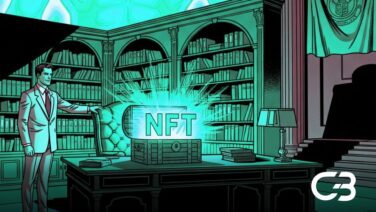Bonding curves have emerged as a significant part of the emerging crypto economy. Such mathematical algorithms enable projects to determine the price of the tokens in a non-opaque manner and maintain visibility of liquidity at all times. Bonding curves make the market behaviour entirely predictable and automated by directly associating changes in price with changes in supply.
What Are Bonding Curves?
Bonding curves describe a form of mathematical mapping that just employs a straightforward correlation between price of token and circulating amount.This generates a predictable pricing mechanism in which if tokens are bought, prices rise and they fall when they are purchased. This is facilitated by blockchain supported smart contracts that tend to automate this process thus eliminating manual intervention.
The design makes it non-reliant on the traditional order books, which manually match buyers and sellers. Rather, the exchange occurs immediately based on the formula previously established in the contract that is encoded in the contract. This method will cause transparency, and uniform rules will be applied to all market players.
How Bonding Curves Work in Crypto
Bonding curves work in the crypto space by having smart contracts automatically change token prices on real-time supply. The contract will mint new tokens when buying them and thereby reducing the price as per the curve. The contract will destroy or transfer tokens on their sale, and this will lead to a rise in price, because of reduced supply.
Such an automated process makes pricing consistent and manual adjustments unnecessary. Liquidity is secured because the contract is willing at any time to make transactions using the formula. On-chain records all changes, making it transparent and able to be verified that it is not malicious by the participants.
How the Bonding Curves Formula Works
Bonding curves are formula-based calculations that determine the price of tokens based on how supply is faring over time. Projects typically choose from several common curve types:
- Linear model -rapidly rises in fixed price with each token that is bought, and attracts a fixed and predictable expansion.
- Exponential model price increases at an accelerated rate with an increase in supply, which will favour buyers first to join the market.
- Logarithmic model– price rise is sharp, then gradually decelerates with higher volume of tokens in circulation, keeping long-term price volatility in check.
Such models provide projects with flexibility in determining economic behaviour. An example is the exponential curves used in growth-oriented projects to generate a need to participate early. On the contrary, stability-oriented projects might favour logarithmic graphs over gradual price variations.
Use Cases of Bonding Curves in Web3
Bonding curves have been useful in several domains of the Web3 scene. Their applications include:
Decentralized exchanges (DEXs) Automated market maker (AMM) exchanges such as Uniswap use bonding curves to determine the price of tokens regarding the balances in the liquidity pool, letting users access the market at all times.
Decentralised autonomous organisations (DAOs) – the governance token prices change automatically when new members enter or members quit, so the bandit cannot suddenly concentrate power.
Like cryptocurrencies, NFT systems allow participants to buy collectables at a low price when there are few people. When the demand increases, the price increases, making it more scarce and thus more valuable.
Through such implementations, projects are able to be in a state of liquidity and fairness without the need for centralized systems. The fact that smart contracts are applied in price calculation makes participants sure that the rules in the market remain transparent and unchanged. This promotes trust as well as sustainable development in decentralized contexts.
Benefits and Strategic Advantages
Bonding curves have the advantage of price transparency, predictability, and fairness for all participants in pricing tokens. First-time adopters can get lower entry prices, which can jumpstart the adoption process and create awesome communities. It is never hard to receive liquidity as either bought tokens can be sold via the direct smart contract, or sold ones can be purchased.
This framework complements this culture of decentralization that blockchain enjoys through curtailing the use of intermediaries. It also makes projects readily available irrespective of the broader market conditions. Along with the proliferation of adoption, the creation of bonding curves will perhaps be a source of numerous token-based ecosystems.
Challenges and Future Outlook
Since the bonding curves introduce visible benefits, there are significant problems facing developers and players in the market. These include:
- Smart contract exploits – insecure coding may result in loss of funds or wrong pricing, which casts low trust and financial stability.
- Front-running risks – traders can overrule the predictable price changes by placing an order before the rest at a higher gas fee.
- In low-liquidity markets, small trades will cause large fluctuations, making the market less stable and less reliable to investors.
Developers are creating adaptive bonding curve models to get around these problems, which adapt to shifts in the market in real time. There is also increasing interest in incorporating artificial intelligence to foresee liquidity requirements and dynamically optimize prices. With the ongoing innovations, bonding curves will likely have a more complex role in framing decentralized finance.
Conclusion
Bonding curves provide a streamlined, visible means of determining prices and managing liquidity in digital asset markets. They depend on mathematical rules, which make changes fair and easy to understand by all concerned parties. Despite the dangers, current advancements are expected to increase their status as a fundamental tool in Web3 and the entire crypto ecosystem.









